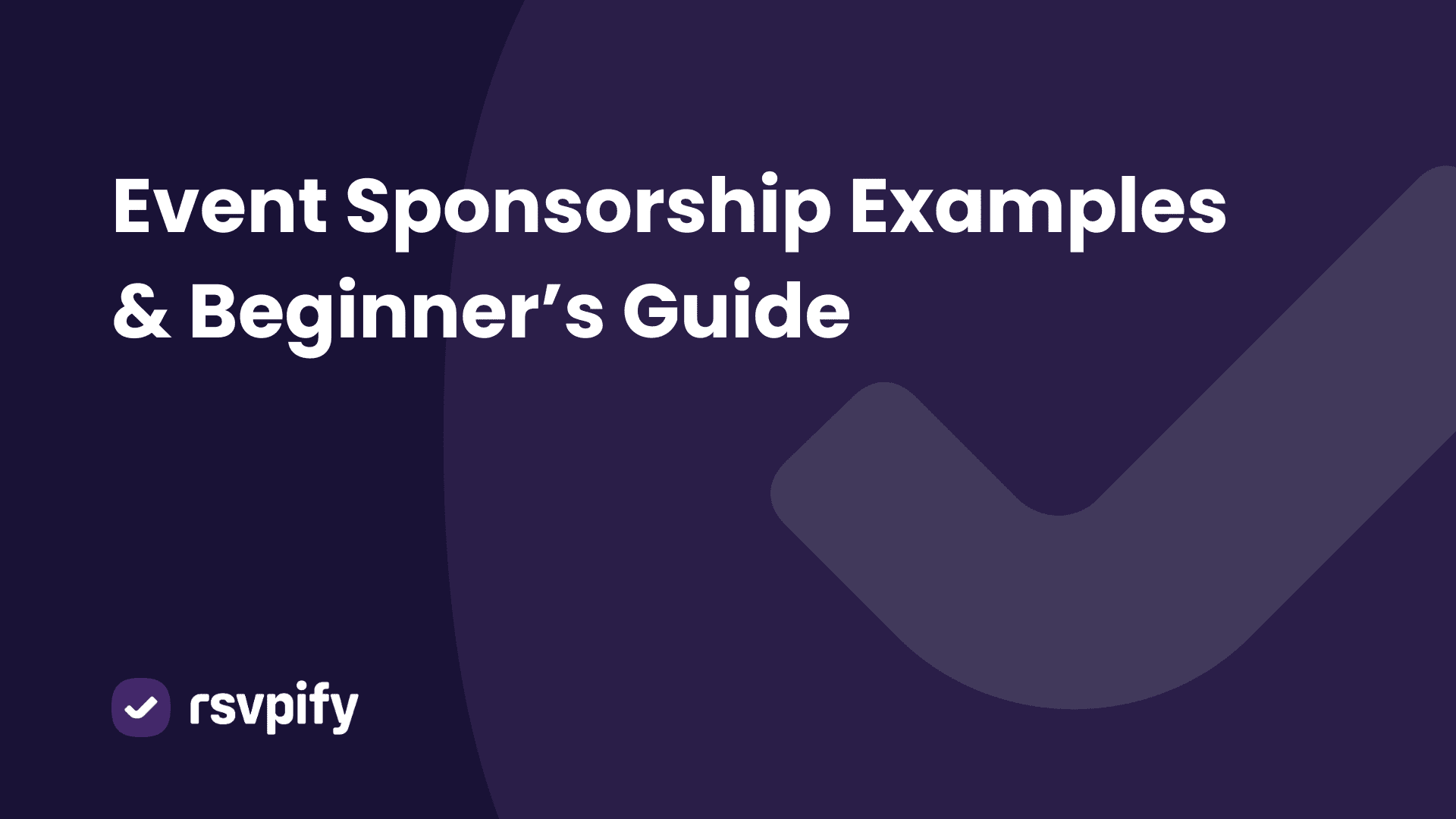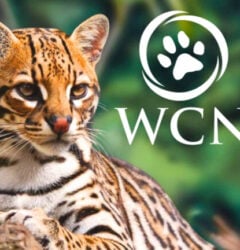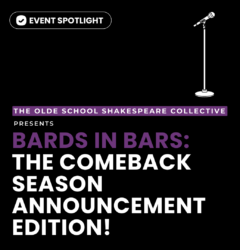23 Apr

Event Sponsorship Examples and Beginner’s Guide
Event planners know the incredible importance of sponsors to the success of any given event, large or small. Sponsors provide the support and resources needed to not only create memorable attendee experiences, but often to make the physical logistics of an event possible in the first place. This is true from the most basic school event to major trade shows and conferences – and often, guests don’t even realize how big of an impact the event sponsors have on what they are experiencing.
However, for folks who are newer to event planning or just attempting to organize a single event for the first time, knowing how to obtain event sponsors, what to ask of them, and the types of ways you can leverage them is essential. To help you get started, we put together an event sponsor guide for beginners, as well as some of our favorite event sponsorship examples to help you find some inspiration for your event management and planning.
What is event sponsorship?
Event sponsorship is a strategic partnership in which a business supports an event (often financially, but also through donations of goods or services, marketing and promotions, etc), in exchange for promotional benefits.
The primary goal for sponsors is to enhance their brand visibility, connect with specific demographics, and align their brand values with the event’s theme or cause. Event sponsorship allows companies to tap into the event’s audience, generating goodwill and fostering customer loyalty by associating with experiences that people care about. For nonprofit events, there may also be tax incentives for event sponsorship to encourage potential sponsors to participate.
Event sponsorship can take many forms, depending on the goals of the sponsor and the nature of the event. Here are some of the most common types:
Financial Sponsorship
The most direct form of sponsorship, this involves a company providing monetary support to the event in exchange for branding and promotional opportunities. Often, event planners will provide tiers of sponsorship to encourage companies of various sizes to participate. These tiers often come with broader promotional opportunities for the participating event sponsors depending on their contribution level.
In-kind Sponsorship
Instead of money, the sponsor provides products or services that the event needs. This could be anything from supplying the event with technology or equipment, to catering, or even transportation services. This type of sponsorship is especially attractive to companies who not only want to promote their brand to attendees, but also showcase their goods or services – almost like a live demo.
Media Sponsorship
Media sponsorship often involves promotional entities such as radio stations, TV channels, or magazines, and more recently social media promotion. Media sponsors use their channels to promote the event, thereby increasing its reach in exchange for exclusive rights to broadcast or cover the festivities.
Promotional Partnerships
Promotional partnerships involve event sponsors using their own marketing channels to promote the event. This could include email marketing to their customers, posts on social media, or displaying posters in prominent locations. Often, these deals can be cross-promotional – both the event host and the partner will feature each other to expand reach for both partners.
Content Sponsorship
This type of sponsorship focuses on creating content that is relevant to both the event and the sponsor’s audience. This could be through speaking opportunities at the event, branded content distributed during the event, or exclusive interviews and articles. For large events with big audiences, it’s often easier to attract content sponsors who might want a speaking or showcase role in order to reach your audience.
Technology Sponsorship
Particularly relevant in today’s digital world, technology sponsors provide platforms or software that facilitate event streaming, engagement (like apps or social media tools), event planning software, and more.
How to solicit sponsors for your event
Step 1: Define Your Event’s Objectives and Audience
Before reaching out to potential sponsors, clearly define what your event aims to achieve and who the target audience is. This will help you identify companies and brands that share similar values or are looking to connect with the same demographic. Sponsors may tell you they want to help out of the goodness of their hearts – but really what they want to know is, who are you going to get my brand in front of? Be prepared to provide clear and accurate breakdowns of attendees for them.
Step 2: Develop a Sponsorship Proposal
Create a compelling sponsorship proposal that outlines the benefits for the sponsor. This should include demographic insights, marketing benefits, and different levels of sponsorship packages. If you don’t have the time or resources to compile all of this data, at least be able to provide a holistic view of the benefits of sponsorships or promoting at different tier levels. For repeated/recurring events, providing previous year attendance and engagement statistics is a great idea!
Step 3: Browse Event Sponsorship Examples and Compile a List of Targets
Make a list of potential sponsors that align with your event’s theme and audience. Be realistic, but also broad. Many major corporations are actually happy to sponsor smaller events, but the easier you make it for them the better. As you compile your list, also consider what types of sponsors you’ll need – and try and tag your sponsorship targets for those different needs before you approach them.
Step 4: Tailor Your Pitch
Customize your pitch for each sponsor based on their brand values and marketing goals. A personalized approach shows that you have done your homework and understand what they are looking for in a partnership.
Step 5: Reach Out Early, and Follow Up Respectfully
Contact potential sponsors through professional emails or phone calls. Be concise and articulate the mutual benefits. After your initial contact, follow up regularly to keep your event on their radar, but also remember not to pester. A good idea is to ask your first point of contact to direct you to whoever is responsible for these types of partnerships, to avoid being lost in the mix with other contacts who may not be involved in sponsorship work.
Step 6: Be Willing to Negotiate
There are two schools of thought here. One is that any sponsor is a good one, because you’ll need countless resources of all types to pull off a successful event. The other mindset is that some sponsors can actually be more trouble than its worth – if they have stipulations about how they are promoted, restrictions on competitors who might be on your sponsor list, or more. As a general rule, remember to remain flexible in terms of both what you can accept (if a sponsor isn’t willing to commit at the level you hoped), as well as firm about what accommodations you are willing to make. Some sponsors won’t be worth the associated headaches.
Step 7: Maintain the Relationship
After securing sponsorship, keep in touch with sponsors leading up to the event. Send them regular updates and ensure they are satisfied with their sponsorship experience. Post-event, thank them for their support and even better, provide event data that can help prove event ROI of their sponsorship to validate their support and keep them interested for future events.
Adam Hausman co-founded RSVPify in 2013 and has been passionate about event tech and ticketing software ever since. Also founder of Greenlight Growth Marketing, he holds degrees from Indiana University (BA English/Psychology 2008) and the University of Illinois-Chicago (M.Ed. Secondary Education 2012). He lives in Maine with his wife, 2 kids, and 2 annoying cats.










Adam Hausman